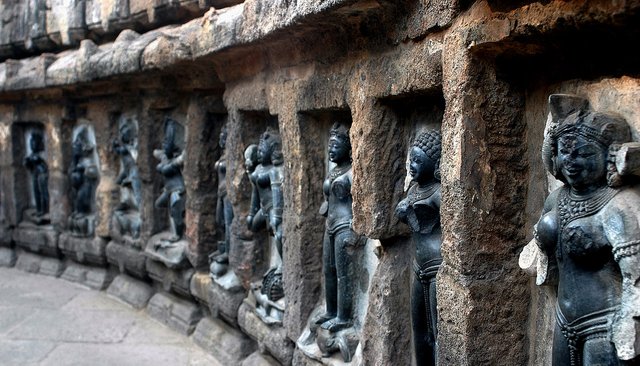Chausathi Yogini Temple as a Proto-Feminist Text
I am discussing the ninth Century Odisha and not of the main, second or third wave woman's rights. I am talking of the Chausathi yogini sanctuary in Odisha as a custom that praised ladies with all her ability.
The sanctuary is said to be worked by the ruler called Hiradei of the Bhauma dyanasty in the town called Hirapur situated in the edges of Bhubaneshwar. Out of the four surviving Chausathi Yogini sanctuaries in India, Odisha holds the refinement of lodging two of them, one at Hirapur and the other in the twin town of Ranipur and Jharial in the Balangir locale. For this piece, be that as it may, the Hirapur sanctuary is mulled over.
Much the same as the other 64 Yogini sanctuaries, this sanctuary too is hypaethral. The sanctuary complex is worked in a roundabout example and does not have a rooftop relying on the likelihood of unlimited versatility of the yoginis all through the sanctuary. The 64 yogini icons are put in the holes of the inward dividers of this roundabout complex. Cut on dark chlorite stones, the yoginis remain on their vahanas, embodying different aspects of the behavioral goals that individuals display. The most wonderful part of the yogini symbols is that they are cut as standard ladies. Some express anger, pity, while others express delight, euphoria, want and satisfaction. These yoginis look the most human; solid, defenseless, delightful, at the same time. On the off chance that the idea of Rasa bewilders the understudies of Indian feel, the sanctuary is an absolute necessity see.
In what capacity would this be able to sanctuary be perused as a proto-women's activist content? The sanctuary was built in the ninth century and stands as a stellar proof of the womanhood, much before the speculations and talks around woman's rights and womanism raised head. The main distinction being that the shakta culture exemplified in the yogini sanctuary culture did as such without spelling out a 'hypothesis' of woman's rights. Further, the dispatching of this sanctuary by Hiradei again tosses light on the way that those were the days when Odisha was led by a progressive line of lady rulers, a story, helpfully hushed ever.
The round example of the sanctuary's development intended to me the interminable cycle of birth and demise, emphasizing the possibility of a lady's part and significance in nature as a maker and nurturer of new life. As said before, the hypaethral idea of the sanctuary can be successfully perused as a lady's content on flexibility of portability voluntarily. By methods for this roofless sanctuary, the Bhauma ruler may have declared her help for all ladies to state their voices and to pick their own particular profession.
The yoginis are cut in various shapes. Almost all the yoginis have diverse body composes and are embellished with particular adornments or alankaars. I read it as an advising answer to the inquiries raised on the consistency and homogeneity demanded on the principles of magnificence and what constitutes being lovely. Contrast is the thing that makes them extraordinary and excellent in their own particular manner.
Presently, going to the subject of organization, a careless take a gander at the yoginis' vahana or vehicle makes this suggestion clear. All the yoginis are cut as remaining on their vahanas prepared to move and play out their assignments. The distinctions in the sort of vahanas picked by every, again feature the significance of contrast and recounts how refinement regarding work made a difference and existed amid those circumstances when ladies did not have a handbook of woman's rights letting them know of the interests to take after and dream to treasure. These readings of the Chausathi yogini sanctuary drove me to consider it a proto-women's activist content and to imagine it as an essential connection that could empower scores of specialists working in the domains of Odia Studies to reevaluate the thought of woman's rights, to a great extent western and how lacking it gets when indiscreetly connected to the oriental world. Authentic contextualization of this sanctuary as far as its time of development is a territory that still should be examined. The social conditions that may have prompted the development of this sanctuary, appointed by a lady ruler would be the subject of enquiry in the subsequent article.
courtesy: shikha maharashi


Historical post, love it , cause i am a student of History. Thank you for sharing this history. Happy steeming.
thanks for this post because i can know about their history,culture etc
Chausathi Yogini Temple is a historical temple
we should learn this histories
wow...its amazinz about these people. Ancient era is really awesome
very good post
The architecture of the Indian subcontinent is much ahead. All of them should know.
Historical Places are a matter of pride.
Nice place it is.
thanks for shear it.
Happy Steeming.
I have visited Odisha for once.I have a good experience of their history and culture .thanks for the post.
Historical issues are very nice.
Thanks for sharing.
Happy Steeming.